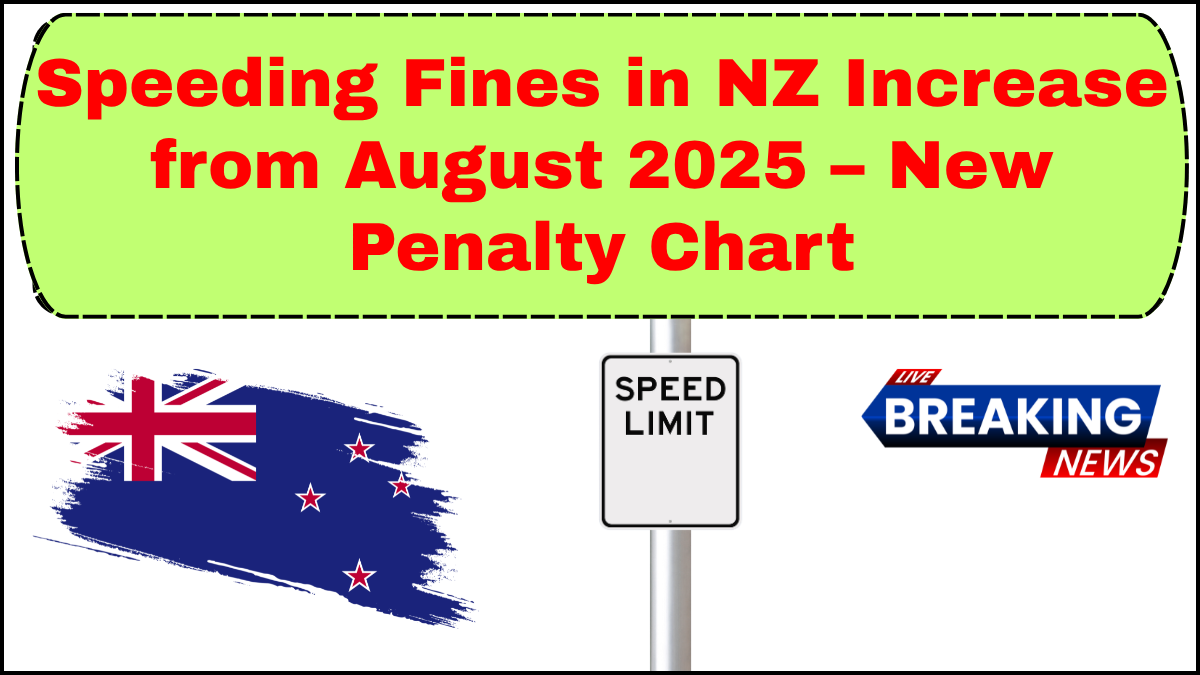The New Zealand government has announced a significant revision to its traffic enforcement framework: NZ speed camera fines will increase from August 2025. This move aims to curb dangerous driving and reduce the high rate of speed-related crashes across the country. Motorists should take note—the consequences for exceeding speed limits will soon become substantially more severe.
Below is a comprehensive guide to what this change means for everyday drivers, how the new penalty system is structured, and how it fits into broader road safety initiatives.

Why Are Speed Camera Fines Increasing?
The change is part of a national strategy to improve road safety and align New Zealand’s enforcement system with international best practices. According to Waka Kotahi NZ Transport Agency, speeding contributes to around one-third of all fatal road crashes in the country. In response, the government is overhauling the current fine structure to make it more proportional to the level of speeding, with a clear message: speed limits are not suggestions.
Overview of the New Penalty Chart (Effective August 2025)
The revised traffic penalty NZ system introduces tiered fines based on how far above the posted limit a driver is traveling:
| Speed Over Limit | New Fine (NZD) | Demerit Points |
|---|---|---|
| 1–10 km/h | $60 | 10 |
| 11–20 km/h | $120 | 20 |
| 21–30 km/h | $200 | 35 |
| 31–40 km/h | $400 | 50 |
| 41+ km/h | $600 | 75 |
For context, under the current system, a driver speeding up to 10 km/h over the limit is fined just $30. The new fines double or even triple the existing rates in most categories.
Demerit Points: More Than Just Fines
In addition to financial penalties, drivers will accrue more demerit points, increasing the likelihood of suspension. Accumulating 100 or more demerit points within a two-year period results in a three-month licence suspension.
Impact on Repeat Offenders
For habitual speeders, the stakes are now higher. Repeat violations within a 12-month period will trigger escalating penalties, including mandatory defensive driving courses, community service, or temporary licence revocation.
Speed Camera Expansion and Automation
To support the new rules, the government is expanding the use of NZ speed cameras across urban and rural zones. New AI-powered units will automatically issue fines without the need for police presence. Locations will be prioritized based on crash data and speeding history.
This means more roads, especially high-risk intersections and school zones, will fall under tighter surveillance. There will be no “soft zones” or leniency; the system is designed to detect even minimal speed excesses.
How This Affects Commercial Drivers
The new policy doesn’t just affect private drivers. Commercial fleets will face closer scrutiny, with penalties impacting both drivers and employers. Fleet operators will be responsible for ensuring compliance with updated over-speeding rules and could face increased insurance premiums if their drivers accumulate infractions.
Broader Road Safety Goals
These changes are part of the “Road to Zero” initiative, which aims to eliminate road deaths and serious injuries by 2050. Increasing traffic penalty NZ levels is a strategic move intended to shift driver behaviour, rather than simply increase revenue.
Practical Tips for Staying Within Limits
- Use cruise control where possible
- Rely on GPS alerts for speed zone changes
- Watch for mobile and fixed camera signage
- Educate teen drivers on the new penalty chart
- Regularly check your demerit points status
FAQs
Q: When exactly will the new fines take effect?
A: The new fines will be enforced starting August 1, 2025.
Q: Will existing demerit points carry over under the new system?
A: Yes, points already on your record will remain and will be combined with any new infractions.
Q: Can I contest a speed camera fine?
A: You can still dispute fines through the standard legal process, but the presence of photographic evidence makes it harder to overturn.
Q: Are school zones subject to different rules?
A: No, but enforcement in school zones will be prioritized with zero tolerance for even slight speeding.
Q: Do these changes apply to cyclists or e-scooters?
A: No, the new speeding fine structure applies strictly to motor vehicle drivers.
click here to learn more